什么是营销心理学以及如何去做?
已发表: 2021-12-24您是否曾经尝试过闯入客户的头脑并找出他们想要的东西? 您是否曾经想知道说服他人做某事的最佳策略?
心理学有你正在寻找的解决方案。 心理学是对人类思想和行为的研究,它可以应用于广泛的领域,从日常生活和治疗到人类服务。 然而,您可能想深入研究心理学和营销的结合。
在现代营销出现之前,在“以客户为中心”或“消费者行为”等流行语出现之前,营销与心理学之间的关系即使不是零也很少。 今天,心理营销(或营销心理学)是任何有利可图的业务的支柱。
如今,营销人员要想有效地开展工作,可以公平地说,他们首先需要充分了解客户是谁、客户的需求以及促使他们购买的因素。 对你来说,这听起来像心理学吗? 如果是,那是因为这些策略以心理学理论为中心,通常被称为营销心理学。
什么是营销心理学?
营销心理学研究人们思考、行为、推理和做出选择的方式。 营销心理学旨在建立一种经过计算的情感吸引力,从而激发客户,这是获得终身客户所需要的一切。
无论您提供的产品多么独特,您总是很有可能与某人竞争。 营销心理学的目标是在竞争中取得优势。 归根结底,人类是你要打交道的人,人类是情绪化的。

理解组织目标和人类行为可以为您的营销策略带来更多机会和令人兴奋的想法。 花时间充分了解一个人的行为方式将有利于您的公司,因为它会发现在潜在客户中引发有益情绪反应的方法。 如果您的公司能够识别出这种公司目标和人类行为的交叉点,那么公司无疑会升级。
要点:营销心理学通常被描述为“将一系列心理学原理整合到您的内容、营销和销售策略中”。 除此之外,您还可以将营销心理学视为发现人类倾向并确定其如何应用于他们的购买决策的一种方式。
营销心理学的主要原则是什么?
您不必成为心理学家就可以在潜在客户中产生积极的情感吸引力。 许多营销专家使用这些技术取得了巨大的成功。 您也可以进行一些研究和实验。
了解个人如何以及为什么以这种方式行事和运作是有效营销的重要组成部分。 您所有的营销工作都应该源于这些知识。 例如,如果您是制作信息图的内容营销人员,如果您从目标用户开始,您的尝试会更加成功。 谁是观众,为什么他们应该看图形? 看完你的照片,你想让他们做什么?
我们已经完成了研究并编制了八种顶级营销心理学策略,以帮助您开展营销活动。 我们将研究这些策略如何影响客户行为,并阐明如何将这些策略实施到更广泛的营销活动中。
营销心理学原则 1 - 社会证明。
大多数广告商已经知道这个概念,但它太重要了,不能被忽略。 将社会证明视为“我也是”效应,人们倾向于接受他们喜欢或信任的一群人的意见或行为。 想象一下从中学开始的尴尬舞蹈——没有多少人有足够的信心成为舞池中的第一个。 尽管如此,在几个人在那里之后,其他人都想跳进去。
根据社会证明理论,人们做出决定取决于他人的行为。 但是营销与此有什么关系呢?
当人们看到其他人使用和享受公司的商品时,他们更有可能从公司购买。 良好的反馈、大量的常客和积极的用户生成内容 (UGC) 使您的品牌更有可能获得更多买家。

将社交证明用作营销活动对于吸引新客户特别有用。
新客户尚未与该项目进行直接互动,因此他们会向当前或过去的客户寻求他们的体验。 分析一直表明,人们更可能相信其他买家对产品的看法,而不是相信公司对自己的看法。
您需要一个想法来突出您的快乐购物者。 我们为您准备了三个。
每当有新客户给您正面评价时,请求允许在您的社交媒体帐户上发布评论。
例如,星巴克不断将客户内容(例如客户在 Instagram 上的短视频和图片)分享到其社交媒体,甚至在其网页上征求客户的建议。 他们还转发了用户在其社交媒体帐户上生成的内容,从而创造了更多互动。 因此,您可以看到他们紧密结合的用户社区总是排队等待购买新的节日主题杯子或特色饮品的机会。

说到用户生成的内容,您可以查看 Apple 的#ShotiniPhone 活动。 为了向世界展示其 iPhone 相机的强大功能,Apple 开展了一项名为 #ShotoniPhone 的 UGC 活动。 然而,Apple 不只是随机选择任何图片发布在其 Instagram 上; 他们在确定要分享的客户照片方面有着非常高的标准——该品牌 Instagram 上的 UGC 图片都以清晰的细节和鲜艳的色彩令人惊叹。 这个标签是病毒式的,有近 1000 万个帖子。
就像苹果一样,你也应该对你分享的内容有点挑剔。 您的 Instagram 提要更具说服力,您的高标准将激励更多人提交。

推荐计划是另一个强大的工具,可让现有客户传播有关您的品牌的信息。
以领英为例。 在个人层面上,Linkedin 允许其用户相互撰写评论和推荐。 考虑到大多数 Linkedin 用户都是训练有素的从业者,来自他人的正面评价将成为您的才能和职业道德的活生生的证据。
特斯拉也有很棒的想法供您窃取。 电动汽车公司特斯拉已更新其推荐政策,以反映其多年来不断增长的客户群。 2015 年,他们给了 1,000 美元,用于将朋友推荐给客户。 从那以后,他们修改了计划,让推荐几个人的特斯拉车主有权获得更好的奖励,比如像 Powerwall 2 这样的独家电池。例如,第一个推荐他们所在地区的 20 个人的人亚太北部美国或欧洲可以获得免费的 Model S 或 Model X。其他推荐奖品是邀请独家派对以及购买其他市场上没有的限量版商品的机会。

社会证明营销不仅意味着口碑。 社会证明还意味着专家、名人和用户评论的令人信服的力量,作为增加人们对您的产品或服务的信任的一种方式。 而现代,社会证据营销的影响力已达到前所未有的高度。 以下是您应用社会证明的其他方法。
聘请专家:专家是那些花费无数时间掌握自己的工作并成为其独特领域的先驱的人。 这就是为什么当他们认可或被看到使用特定产品时,有这种特殊需求的追随者可能会听取专家的建议。 专家社交证明可以有多种形式,例如,在您的 Facebook 和 Instagram 页面上进行实时问答,或者要求专家在社交媒体上发表他们的意见。
让您的产品得到名人的认可:名人和社交媒体博主对他们的追随者群体产生巨大影响,这可能会转化为您公司的数千名新客户。 许多品牌使用代言的一个例子是聘请一线名人参加竞选活动,或者将您的产品提供给在您所针对的人群中拥有权力的影响者。
营销心理学原理 2 – 稀缺性
稀有物品总是比日常物品更有价值。 想想稀有矿物,例如祖母绿或红宝石,它们的价值更高,因为它们很稀有。 这就是稀缺性原则。
这种心理学理论表明,如果存在稀缺性,人们会更加重视产品。 它不仅仅是珍贵的宝石。 一项研究表明,当可用的饼干较少时,人们会更加重视类似的巧克力曲奇。
在营销方面,稀缺性原则表明,如果人们认为商品供不应求,他们更有可能购买产品或支付更多费用。
将这种营销心理视为害怕错过(FOMO)。
换句话说,消费者不想错过可能很快就会缺货的商品。 稀缺性会引起一种紧迫感,从而促进冲动购买。 为了建立稀缺感,您可以进行临时交易或供应量少的交易。 在活动中使用诸如“售完即止”或“仅剩 12 小时”之类的语言,让客户知道,如果他们不尽快购买,他们将永远没有机会再次购买该产品。
看到交易将到期,客户更有动力完成他们的客户旅程。 并做出购买决定。
以下是公司可以应用营销心理学稀缺性的其他一些方法。
- 黑色星期五销售:黑色星期五最初是分配给感恩节后第二天发生的销售的名称。 尽管如此,它已迅速成为一种全球趋势,吸引了全球各地的逢低吸纳者。 几十年来,零售商一直致力于围绕大打折的日常用品营造一种稀缺感,尤其是在这个购物旺季。
谈到黑色星期五,没有比亚马逊更好的例子了。 他们的 Prime Day 活动一直是整个行业通过在节日期间为购物者提供创新体验来提高利润的一种案例研究。 亚马逊在黑色星期五成功促销的关键在于其完全数字化的电子邮件营销方法,从个性化的电子邮件促销到包含促销标题到电子邮件,以及向 Prime 会员独家授予早鸟使用权。
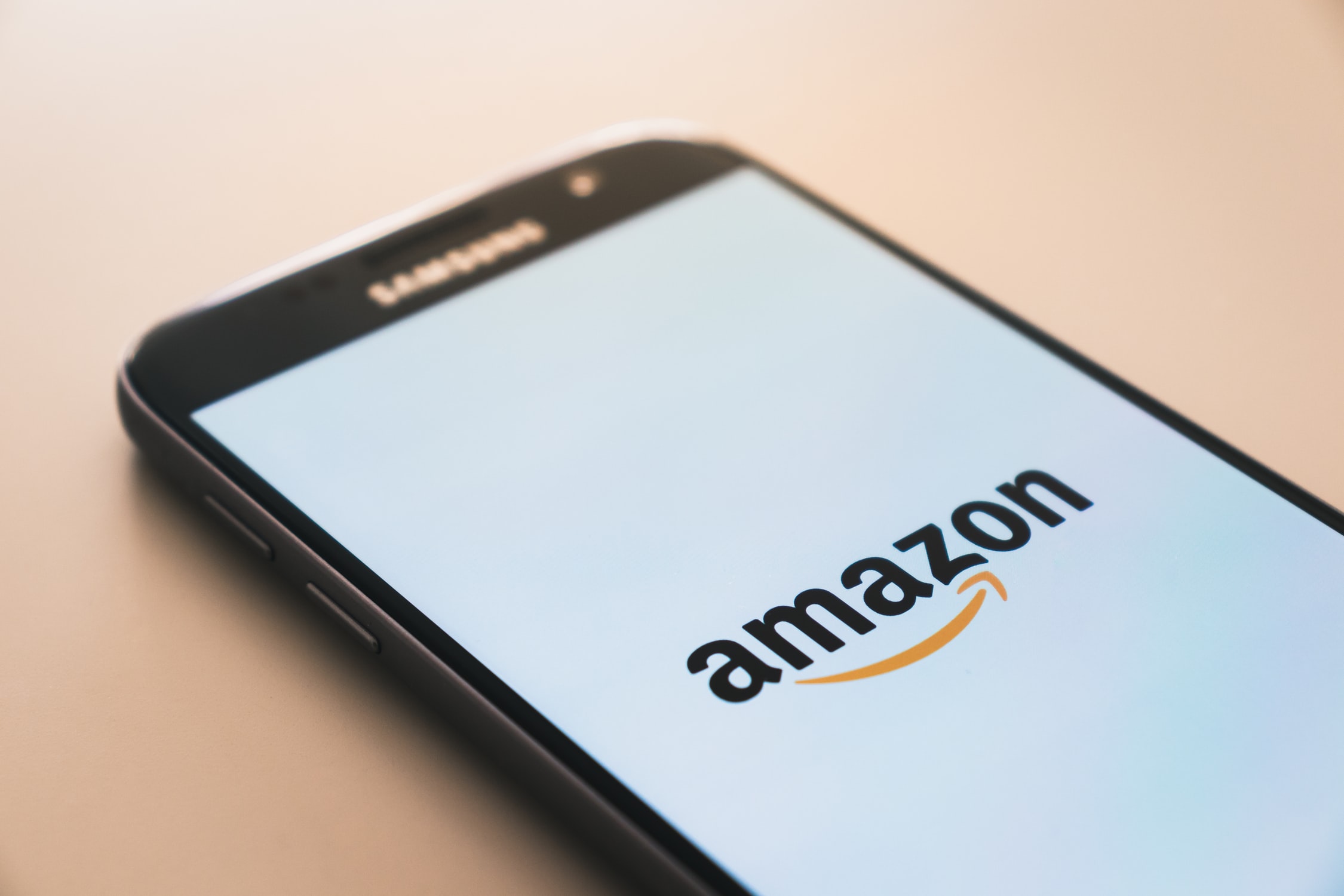
黑色星期五期间,亚马逊在各个方向利用电子邮件促销来提高利润。 此外,亚马逊还发送推送通知以鼓励人们打开亚马逊应用程序并下订单。 他们还发送个性化的时事通讯以及流行的 Prime 视频、活动和产品建议,以在 Prime 用户中引起轰动。 2018 年,亚马逊的黄金时段收入增至 41.9 亿美元。
- 独家使用权:品牌可以通过升级的会员选项使他们的产品感觉优质和独特。 无论是 VIP 访问独特的礼物还是获得产品的高级选项,访问其他人无法广泛使用的东西会让客户觉得他们拥有的东西是有限的,因此是独一无二的。
例如,耐克在 2017 年推出了耐克应用会员计划,为会员提供独家购物福利。 NikePlus Unlocks 是耐克通过提供更强大的移动购物平台来改善其数字购物体验的延伸。
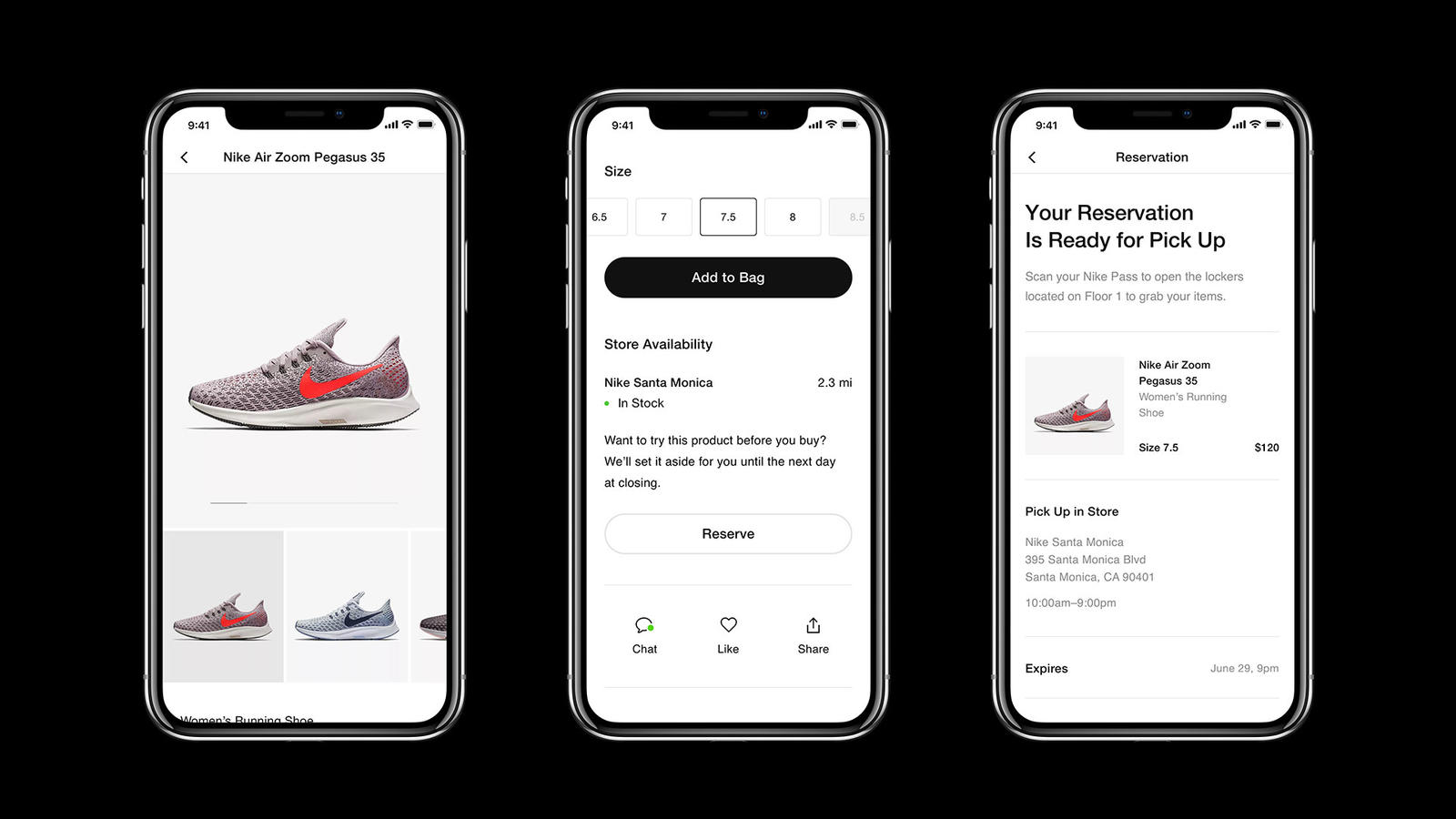
Nike App 内置基于之前购买的智能预订系统,允许会员独家访问特定产品并实时获取 Nike 代表消息。 Nike App 还让您有机会购买仅限会员的高级产品,包括珍贵的合作和最新的创新,以及定制该产品的选项。 事实上,Nike App 是唯一让客户可以定制全新 Nike Air Vapormax 和 Nike ACG Mowabb iD 专属配色的地方,或者通过为 Nike Air Force 1 添加超大标志和定制花边装饰来彰显你对团队的无限热爱高 NBA iD。 Nike App 也是您购买 Nike Hyperadapt 1.0 原版配色的唯一地方。
营销心理学原则 3 – 互惠
当有人给你礼物时,你是否觉得有必要给他们一些东西作为回报(或者如果你没有给他们任何东西,至少会感到羞耻)? 这种感觉被认为是心理学中的互惠原则。
营销心理学中的互惠原则意味着,如果提供免费产品,消费者通常会觉得对企业负有责任。 有很多方法可以在营销中利用互惠原则。 公司通常通过提供免费内容(例如独家电子书、文章、品牌运动衫,甚至免费桌面背景)来使用这一原则,以获取潜在买家的详细联系信息。 即使是像手写笔记这样微不足道的东西,也可以在建立互惠关系方面创造奇迹。 **在要求交换东西之前,请确保您免费提供一些东西。 客户看到的第一个广告应该突出他们将收到的内容,然后在他们点击优惠链接后询问他们的联系方式。 **
例如,一家园艺用品公司向现有客户发送免费的种子和调查包。 由于客户已收到公司赠送的礼物,他们可能会觉得有义务填写并返回调查表。
或者,如果您在餐厅的账单中收到了薄荷糖,那么您很可能已经成为互惠的受害者。 据西奥迪尼介绍,当餐厅不给食客薄荷糖时,他们会根据自己对所提供服务的判断给小费。 使用一枚薄荷糖,小费会上涨 3.3%。 两块薄荷糖? 小费跳跃飙升至大约 20%。

另一个例子,Body Shop 通过提供免费样品来使用互惠原则。 这种策略取决于人脑中的让与取原则。 在做出决定时,消费者会倾向于回馈一些东西来满足这种与生俱来的互惠本能。

营销心理学原则 4 – 损失厌恶。
顾名思义,损失厌恶原则是指人们倾向于避免损失而不是获得其他同等价值的东西。 换句话说,一旦人们拥有了某样东西,他们就真的不喜欢失去它。
例如,人类对失去 10 美元感到不安,而不是我们对找到 20 美元感到高兴。 为什么我们会有这样的行为? 这可能是因为人类的大脑将失去与强烈的焦虑和恐惧联系在一起,并且发现消极情绪对人的影响比积极情绪更深刻、更持久。
当 Daniel Kahneman 深入研究这个概念时,他将参与者分为不同的组。 第一组被给予一个简单的选择,即接受杯子或巧克力棒。 第二组被分配了一个马克杯,然后提供了将马克杯换成巧克力棒的机会。 相比之下,第三组首先获得了一块巧克力棒,然后有机会将其换成一个杯子。
在第一组中,略多于一半(56%)的受试者选择了马克杯而不是巧克力棒。 然而,对于第三组,在获得巧克力棒后,90% 的人拒绝了更换巧克力棒以获得杯子的机会。 相比之下,第二组的参与者中有近十分之九 (89%) 拒绝将他们的杯子换成巧克力棒。
这个故事的寓意是人们不喜欢失去他们已经获得的东西。
要实施此营销心理学原则,请尝试围绕损失重新构建您当前的广告。 当您提供免费试用时,请提醒客户在免费试用即将结束时他们将失去什么。 或者,您可以建议在客户的订单超过特定价格时提供免费送货服务。 如果他们在结账时没有达到免费送货的最低要求,请向他们展示他们必须支付的运费金额与他们需要添加的免费送货金额的比较。
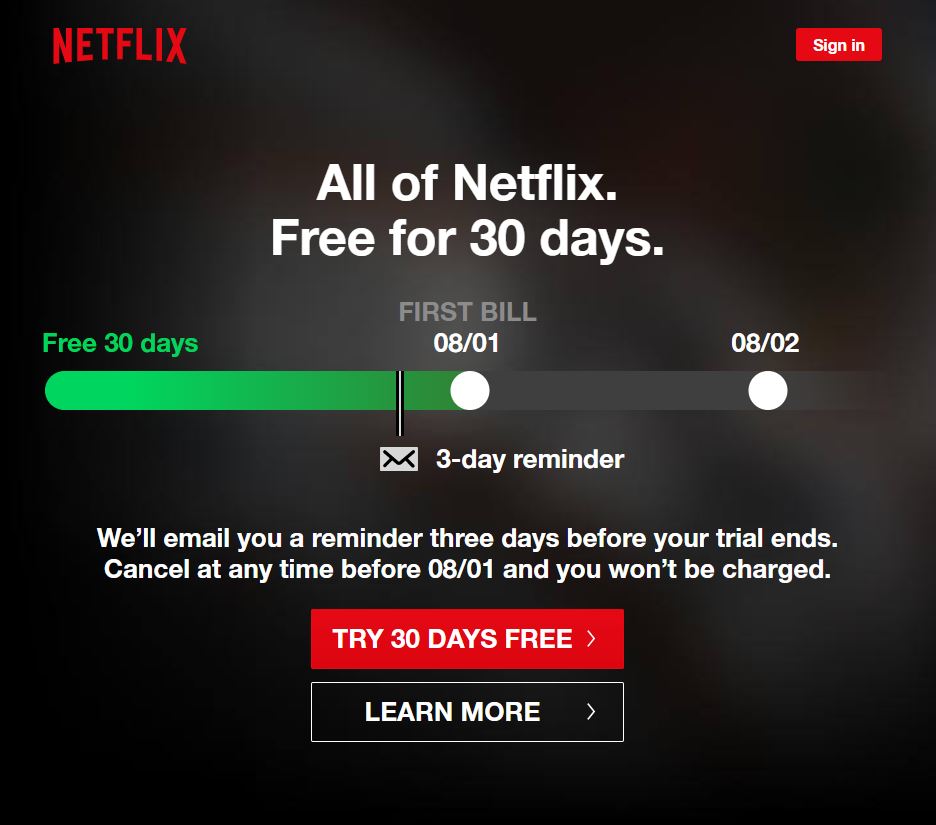
例如,看看目标。 众所周知,这家零售巨头会对其在线购物者使用这种策略。 如果购物者不符合公司规定的最低 35 美元,他们将无法获得免费送货服务。 如果他们没有达到 Target 的最低 25 美元,他们甚至根本无法订购该商品。
Target 用粗体表示“仅在 25 美元的订单下发货”,以告知购物者如果未达到最低订单,他们将不得不支付运费。 当购物者看到这一点时,他们将被激励进行更大的购买。

其他一些损失厌恶营销策略是
优惠试用:研究表明,我们对拥有的物品比没有的物品更看重。 因此,通过为您的客户提供拥有该产品的机会——即使是短期的,您也会让他们感到不购买该产品的损失。
限制资源:激发消费者购买的一种方法是提醒他们产品的稀缺性。 电子商务公司通常会创建一定的库存数量,并让客户知道库存是否只有几个。
提供礼物:错过免费礼物的想法也将成为说服访问者进行他们最初犹豫不决的购买的一个很好的理由,无论是免费送货,还是客户支付一定金额时的优惠券代码金额,或免费礼品包装。
有些人可能认为损失厌恶和稀缺性原则相似,这在某种程度上是有效的,但各自的侧重点不同。
使用稀缺原则,您可以突出项目的有限供应,但使用损失规避原则,与供应无关。 损失厌恶意味着让消费者知道他们可能会失去他们所拥有的东西。
营销心理学原则 5 – 锚定偏差
锚定偏差告诉我们,我们收到的与购买决策相关的第一条信息将显着影响我们的决策过程。 什么对你的钱包更好:买一个 3 美元的避孕套还是生孩子? 锚定是通过将产品与其他事物进行比较来影响我们如何看待产品的认知偏差。
营销中的锚定偏差表明客户根据他们获得的第一个信息来评估成本和商品。
所以,如果我最喜欢的精品店通常以 60 美元的价格出售牛仔裤,但他们决定以 30 美元的价格以一半的价格出售,我会欣喜若狂地想,“我刚刚在这些牛仔裤上获得了疯狂的折扣”。 我什至可能会买它们。 但如果我的朋友通常购买 20 美元的牛仔裤,他们就不会像我那样印象深刻。
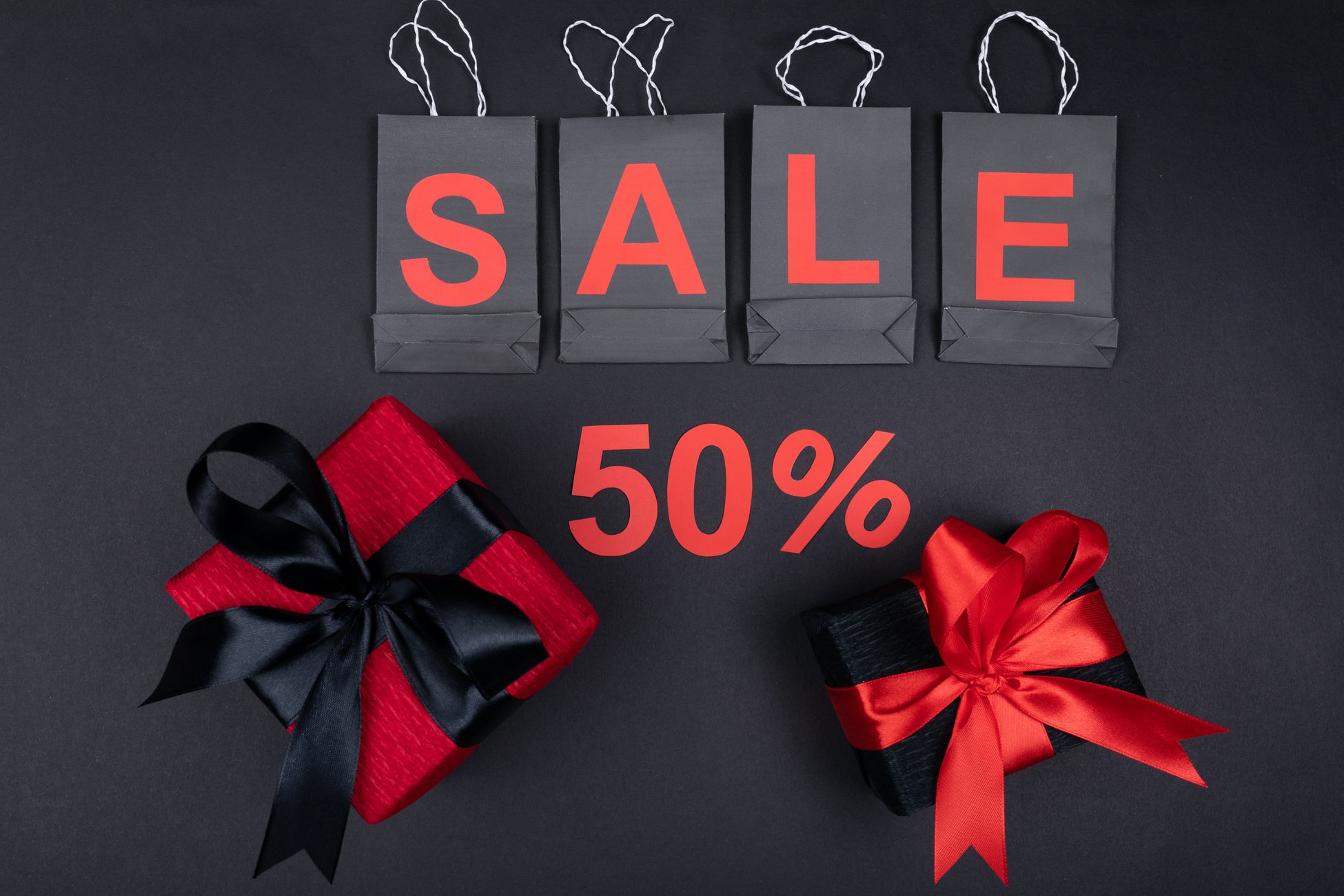
通过在销售期间显示实际成本和降低的费率,在您自己的业务中充分利用这一心理原则。 原始成本现在是客户的参考点(锚点),使折扣看起来比单独显示折扣价更好。 您甚至可以明确说明您的客户将通过销售获得多少百分比的折扣。
其他一些锚定偏差营销策略是
选择以 99 结尾的价格:Kenneth Manning 和 David Sprott 在使用钢笔的研究中说明了这一点。 参与者被要求从几乎相同的两支普通圆珠笔中进行选择。 一款售价 1.99 美元,另一款售价 3 美元。 82% 的参与者更喜欢便宜的钢笔。 研究人员随后重复了实验,但将价格分别更改为 2 美元和 2.99 美元。 更便宜的钢笔仍然被更频繁地挑选,但只有 56% 的参与者。 你看,第二对笔之间的价格差距在客户心目中并不那么重要,而这几美分可能会显着增加贵公司的营业额。
提供更多产品系列:一些消费者最初会认为一件 40 美元的棉 T 恤太贵了。 然而,将同一件 T 恤放在一件 99 美元的豪华 T 恤旁边,人们会以全新的眼光看待 40 美元的选项。 专注于少数精选商品或服务的企业通常通过销售三个版本的产品来利用锚定偏差原则:廉价选项、中档选项和昂贵选项。 最昂贵的选择作为锚点,提高了中档产品的价格门槛。 如果高级选项与中档选项一起提供,则后者的销售额将会增加,即使质量可能没有变化。
一点一点地提高价格:你如何在不惹恼现有客户的情况下提高价格? 让我们看看苹果的策略。 多年来,该公司一直在稳步提高价格,尽管批评者抱怨说该产品并没有太大改善。 但是,由于每个新的价格都充当了下一次价格上涨的锚点,因此客户发现差异相对较小并欢迎它。 因此,您可以考虑引入较小的、连续的更改,而不是一次添加所有主要且昂贵的功能,因为客户会更倾向于在这些更改上花钱。

- 使折扣更具吸引力:您可以将“100 规则”扩展到这种情况:对于价格低于 100 美元的产品,折扣应以百分比来衡量。 例如,从 5 美元减至 3 美元相当于 40% 的折扣,比 2 美元的折扣更具吸引力,对吧? 另一方面,对于超过 100 美元的产品价格,您应该以美元量化折扣价。 例如,初始价格为 500 美元,100 美元的折扣听起来会好于 20%。
营销心理学原则 6 – 诱饵效应。
上述大多数原则在营销之外都有广泛的影响,但诱饵效应几乎是消费者心理所独有的,
这是一种认知偏差,即添加第三种吸引力较小的选择会使更昂贵的产品看起来比只有两种产品可供选择时更好。 诱饵效应是一种经过统计验证的策略,用于操纵人脑对理性选择和验证自己决定的渴望。
当只有两种选择时,消费者会专门比较商品的价格和质量。 然而,第三种选择将改变提供给买家的商品的概念视图,增加他们购买更昂贵选项的机会。
诱饵效应是苹果大部分时间用于其项目的东西。 当我们想到苹果和诱饵效应时,我们首先想到的是他们在其少数产品上使用了 64GB、256GB 和 512GB 的各种存储限制,无论是 iPhone、iPad 还是 Mac,这引入了更多的排他性在其产品组合中。 诱饵效应也解释了为什么苹果总是根据版本为每台设备定价,例如当前 iPhone 12、iPhone 12 Pro 和 iPhone 12 Pro Max 的价格分别为 799 美元、999 美元和 1099 美元。

您可以通过以下五个步骤将诱饵效应应用于您的报价:
- 第 1 步:选择您的关键商品 - 您最希望出售的商品。
- 第 2 步:构建关键项目 - 关键项目应该比其他项目具有更高级的功能。
- 第 3 步:构建诱饵 - 目的是让您的关键物品主宰诱饵并最大限度地提高其吸引力。
- 第四步:提供至少3个选项; 但不要发疯并提供超过 5 个。
- 第 5 步:为靠近您的关键物品的诱饵选择相同或略低的价格。
营销心理学第 7 条原则——信息差距。
信息差距理论经常出现在内容和社交媒体营销中。 您可以看到内容创建者将标题写成问题或短语的方式所使用的理论,例如:“如何...”或“...的秘密”或“...的捷径”这些标题用于激怒观众的注意力想要填补信息空白。
以下是如何在句子中使用信息差距理论的一些示例:
- 让访问者点击您的博客的秘诀是使用信息差距理论。
- 提高博客流量的最佳方法是使用信息差距理论。
- 你有没有想过如何使用心理学来改善你的在线营销?
你能看到它是如何工作的吗? 这些句子设定了一个目标(让人们点击您的博客,增加博客流量并改善您的在线营销)以及为该目标提供解决方案(使用知识差距原理和使用心理学),但留下一个关于如何从 A 点到达 B 点的大洞。这是信息中的空白,会激发读者的兴趣,促使他们继续阅读。
请记住,这种营销心理学走得太远可能会成为点击诱饵,许多内容创建者正在避免与文章内容不匹配的误导性标题。
品牌还旨在通过社交媒体将粉丝引导至他们的主页以增加流量。 无论是吸引追随者关注最新的促销活动还是新闻报道,您经常会发现品牌在 Instagram 快拍上使用模棱两可的卖点并通过“向上滑动”来了解有关促销或独家优惠的更多信息。
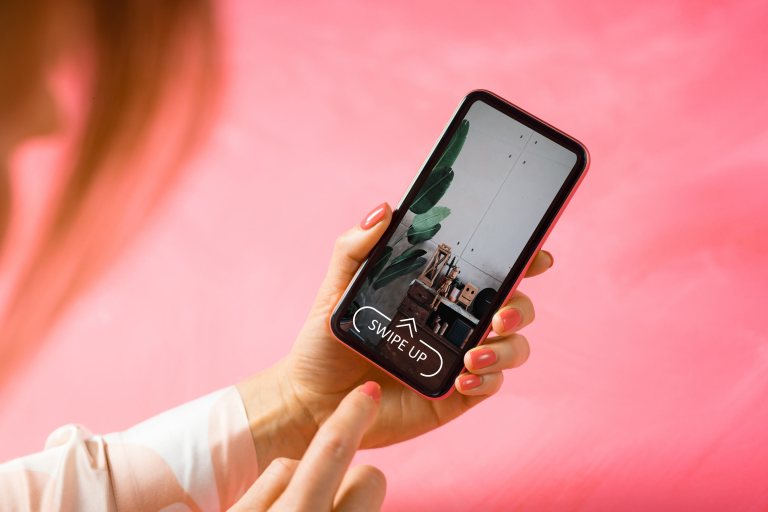
营销心理学第 8 条原则——巴德-迈因霍夫现象。
**你有没有听说过什么东西,只是在你所到之处才开始看到它? 那东西开始到处出现,很快你就开始看到它出现在日常生活中。 每当您看电视时,您会注意到品牌的广告,但不会注意到其他任何东西。 每当你去杂货店时,你都会走在过道上看到它。 你突然想到,每个人,包括你所有的朋友,都有这个产品。 **
您应该为此归功于 Baader-Meinhof 现象。
Baader-Meinhof 效应也被称为“频率错觉”,因为它是一种感知偏差,它描述了最近引起我们注意的名称、术语或事物是如何在之后立即以不寻常的频率出现的。 或者换句话说,你在地球上到处都能看到它。
从逻辑上讲,那个东西一直都在,但直到你听到它的那一刻,你才意识到它。 那么为什么会出现这种情况呢?
有两种解释为什么这种现象如此运作。
第一个是选择性注意,这表明当你被一个新的短语、对象或概念击中时,你的大脑会下意识地寻找有关该主题的更多细节。 第二个是确认偏差,这意味着每当你看到任何与主题相关的东西时,你的大脑都会向你保证,这是该问题在一夜之间获得关注的证据。
让我们来了解一下这种 Baader-Meinhof 现象对营销意味着什么。
我敢肯定,如果您是营销人员,您就会知道培养客户和客户的重要性。 作为一个品牌,你的目标应该是当客户需要你能提供的东西时,他们首先想到的是他们。 你有没有听过有人在思考某事时说:“你是我脑海中第一个出现的人”? 如果您可以在您的行业中将您的品牌定位为“第一人称”,那会有多大好处?
现在,借助 Baader-Meinhof 等心理现象,这项任务成为可能。 您需要做的就是培养您的观众。 换句话说,一旦有人开始注意到您的品牌或点击您的网站,您就会想让他们开始在任何地方看到您。
**那么你如何培养你的观众? **
将您的营销工作重点放在让潜在客户知道您通过激起好奇心的内容而存在,并让他们质疑这些年来没有您的产品或服务他们是如何生存下来的。 然后,您可以通过营销策略来培养他们,例如重新定位广告活动、有针对性的电子邮件、Facebook 和 Instagram 上的广告提升等。
关键是进入他们的头脑,让他们开始注意到你; 让 Baader-Meinhof 现象为您完成剩下的工作
但是,请记住,您的营销策略需要既清晰又积极,以充分利用 Baader-Meinhof 现象。 虽然这种频率错觉是独立发生的,但如果没有具体的营销基础,你就无法从这种心理现象中获得任何好处。
当您处理内容以吸引新客户时,请确保您创建的内容清晰明了,并包含具有切实利益的积极品牌信息。
换句话说,如果您想看到这种现象采取行动,您需要付出真正的努力。 您无需努力成为运动休闲的阿迪达斯或儿童小说的哈利波特,但在做出购买决定时确保将您的品牌放在消费者名单的首位。
将心理学纳入您的营销策略的一些额外提示和技巧。
如今,营销人员要想有效地开展工作,首先需要充分了解客户是谁,他们想要什么,以及是什么促使他们购买。 对你来说,这听起来像心理学吗? 如果是,那是因为这些策略基于心理学理论,通常被称为营销心理学。
以下是将心理学纳入您的营销策略的更多提示和技巧。
1.从小处着手
**这被广泛称为“脚踏实地”的技术。
Freedman 和 Fraser (1966) 敲门询问人们是否可以做一些小事,比如在请愿书上签名或在窗户上贴上贴纸。 他们还故意跳过了几个根本不和他们说话的地方。
后来,售票员又跑到同一个房子里,要求比第一次更重要的事情,比如在他们的院子里放一个大牌子,这与之前的要求有关或与另一个主题有关。
他们发现,他们已经认识的人更有可能同意他们更重要的请求,如果请求涉及新主题,则愿意接受的可能性几乎是 3 倍,如果请求是关于同一问题,则愿意接受的可能性会增加 4 倍多!

这对您的营销策略意味着什么?
如果您想激励客户为您做某事,一种方法是首先要求一些小事,然后逐渐扩大您的要求。 你可以看到到处都在应用这种技术的公司。 首先,非营利组织只是要求您填写您的电子邮件地址。 接下来,他们会让您了解他们的活动和成功。 然后,在您意识到这一点之前,他们要求您捐款。
踩门技巧的反面是面对面,你从要求大而不是从小做起。 你提出了一些重要的提议,也许是一些令人怀疑的东西,以至于客户不得不拒绝。
2. 使用自发的奖励计划
你知道一些连锁餐厅和咖啡店每次买东西都会给你的印章卡吗? 你收集了足够多的那些卡,你会免费用餐吗?
In fact, while those cards are useful to some extent, they are not the most efficient way to motivate customers to return. Instead, you may want to try changeable reinforcement. Customers are rewarded spontaneously, instead of having an exact ratio reinforcement schedule, where customers are rewarded every 5th time or 10th time they come.
This strategy is based on operant conditioning in psychology, where we often associate our actions with events, for example, associating returning to a restaurant with getting a meal on the house.
Operant conditioning usually entails rewarding behavior to get more of that behavior.

Studies back this up too. Skinner has conducted a study of rewarding mice with food in two different ways:
- Reward food every 5th time it pressed a bar (fixed ratio scheduled)
- Reward food randomly (variable reinforcement).
He discovered that the second choice was more durable and required less reinforcement (less food) . The mouse will continue to press the bar even when the reward' value has sufficiently decreased, whereas non-habitually responding mice in the first option will quickly slow down their pressing rate.
What does this mean for your marketing strategies?
Although humans and animals are incompatible in some aspects, deep down, we are very similar. Imagine that a restaurant didn't tell us whether they would give us a drink for free, how would we feel? We'd be going back to improve our odds of having the free booze as often as we can, or at least we were left with the impression that the company cares for us!
Look at Cereal brands and Willy Wonka's chocolate factory for some examples. They reap the benefits of variable reinforcement by putting golden tickets in some of their cereal boxes or candy bars, fueling customers to want to purchase more for a shot to win!
3. Relate to your customers
Goldstein, Cialdini, and Griskevicius (2008) carried out a study on Using Social Norms to Motivate Environmental Conservation in Hotels . They attempted to determine what kind of message would inspire more hotel guests to reuse their towels. There were five variants of the messages.
- Standard environmental message: “help save the environment”
- Descriptive norm message: “Join your fellow guests in helping to save the environment”
- “Join your fellow guests who stayed in the same room in helping to save the environment”
- “Join your fellow citizens in helping to save the environment”
- “Join the men and women who are helping to save the environment”
As a result, the Standard Environmental Message “help save the environment” yielded a 35% of towel reuse rate, 10 to 15% less than that of the descriptive messages . What is even more interesting is that the same room identity descriptive norm condition yielded a significantly higher towel reuse rate.
**What does this research mean for marketing? **
This phenomenon where people generally view others who are closely related to them more positively is called in-group favoritism.

All in all, the easiest way to inspire your customers to do something is to suggest that other people in their circumstances have done this. Work to find common ground and make comparisons among your customers.
4. Attractively market your offers
Consider the situation below. Which one do you think is more appealing as a customer?
The initial price of an outdoor jacket is $125, and that of a tripod is $23 for the tripod. The company wants to reduce the price by $11.50 for anyone who buys both products. There are two ways to market this offer:
- $113.50 for the outdoor jacket, saved $11.50 and $23 for the tripod.
- $125 for the outdoor jacket; and 50% OFF for the tripod at $11.50.
Which option would you be more likely to buy if you had to spend 20 minutes driving to the store?
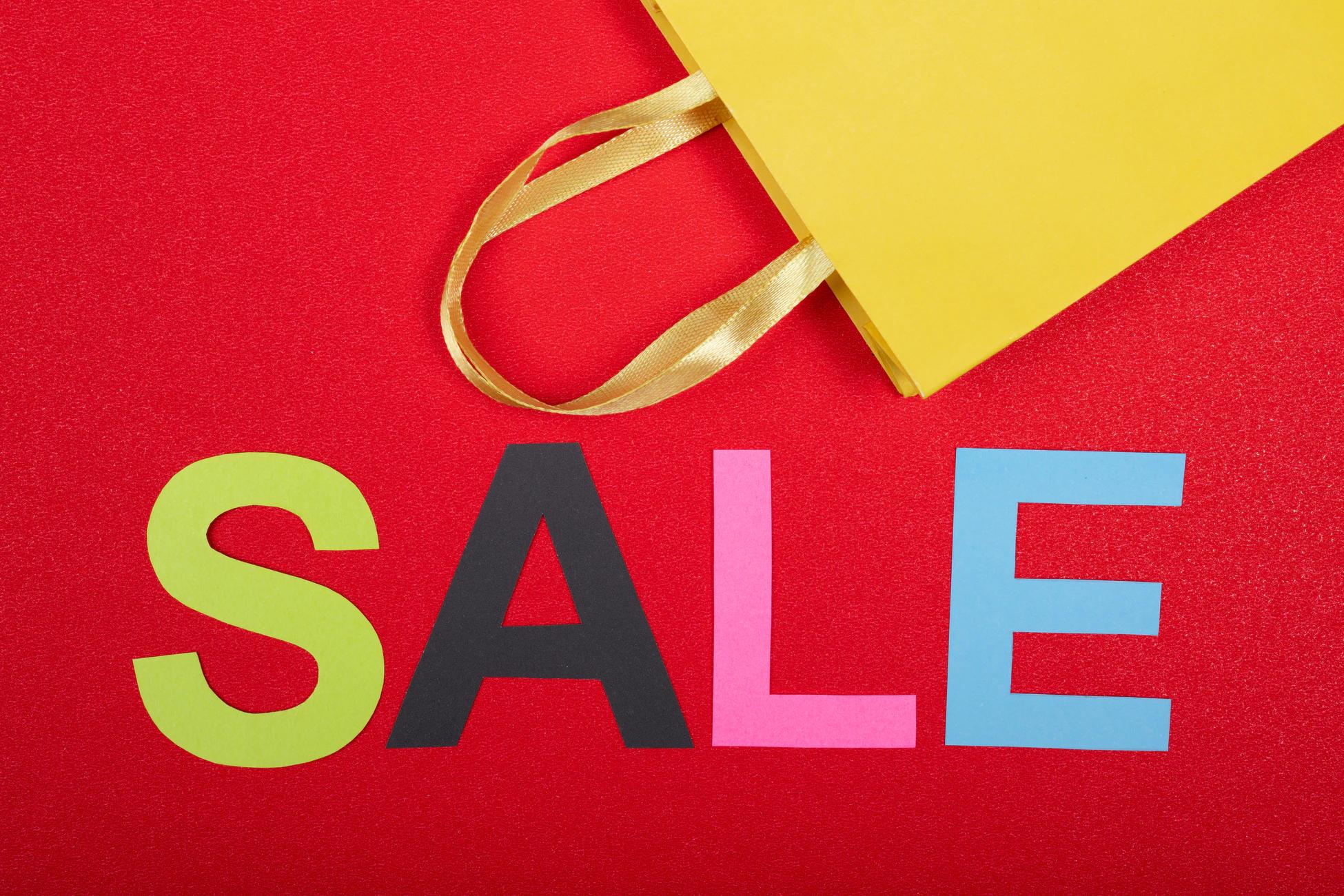
This adapted case is based on research by Kahneman and Tversky (1984). You might have realized that consumers are saving the same amount in both cases: $11.50! However, in that research, they discovered only 29% of the people were willing to purchase the jacket, while the percentage of respondents inclined to buy the tripod was 68%, more than double the jacket's figure.
What does this mean for your Marketing strategies?
The point is that consumers perceive gains and losses in relative terms, not absolute terms. Or, they think in percentage, not in the number dollar. A tripod's 50% discount of $11.50 is a larger percentage than a jacket discount of $11.50.
Be sure to consider this when designing your sales pitches and marketing messages! Think of more attractive ways to frame your messages - even if they mean the same thing.
You can extend the “rule of 100” to this context: For products that cost less than $100, the discount should be measured as a percentage. For example, a reduction from $5 to $3 amounts to a 40% discount, much more appealing than a $2 discount, right? On the other hand, for product prices more than $100, you should quantify the discounted price in dollars. For example, with an initial price of $500, a $100 discount would sound better than 20%.
5. Capture your audience's attention
Castel, Vendetti, and Holyoak surveyed employees in a building in 2012. While the average time that the employees had been working in that building was 4.5 years, only 25% of the surveyed people knew the nearest fire extinguisher's location. It is surprising to how low the figure is, given how dangerous it could be not to pay attention to these sorts of things.
What does this mean for your Marketing strategies?
Make sure to get and direct your audience's attention. If you're writing a blog and want your audience to pay attention to an important image, video, link, or call to action, be sure to draw their attention to that. You can try specifically addressing it in your writing or by making it stand out on the screen.
However, remember not to clutter your websites. I guess we've all been victims of loads of advertising and content on websites, which can be incredibly confusing and make it impossible to figure out what to concentrate on. In these situations, If I read a post, for example, I would find myself scrolling through and missing everything other than the text. But oftentimes, I found out that there was a picture or table I skipped that had very important information.
Don't do this with the fantastic content you've produced, especially in this era of information abundance, which has contributed to short attention spans. Instead, strive to engage and catch their complete attention from the viewer.
6. Give your customers an Anchoring Price Point
Check out: Marketing Psychology Principle number 5 – Anchoring Bias
Customers who are not knowledgeable about your industry or products' price range may seek a reference point or an anchoring price point to examine. If it is the case with you, you can seize the opportunity by providing what your customer needs to make a buying decision.
Let's say you're on the call with a potential customer, who may or may not be knowledgeable about the products' reasonable price point. In other words, they do not know anything about the prices of rival products or your product's future quality. If it's via email, your potential customer will have more time to analyze and ponder the price further. However, with a phone call, time is constrained, and they have to think and react immediately to the deal.
This would be a perfect situation for you to throw an anchoring point. Maybe start by proposing a fairly high (but not ridiculously high) price that sets an anchor on which to base your customer. They will use this as their only data point, with no prior information. It is possible that further thought and debate will be gathered around this starting point.

Throwing an anchoring point aligns with the technique mentioned above called door-in-the-face, where you start high and then later negotiate a bit lower.
However, you need to be very cautious in deciding whether your customer is knowledgeable about the field or not. You don't want to risk upsetting an informed customer by assuming they are not familiar and giving a price that they know is ridiculous relative to competing products. Some educated customers might not take it seriously, but others might. Anchoring is validated by scientific proof, but at the end of the day, beginning with a high price is simply an idea. It's up to you to determine how best to respond to and apply to your conditions.
7. Get your customers to put in some effort
If you want someone to remember some information longer, Craik and Tulving (1975) demonstrated in a study that you need to get them to put in more effort. Or you can say: the depth of processing will determine how customers think of you.
Craik and Tulving presented a list of words to the subjects and instructed them to perform a task with each word. Then, they asked people to remember as many words as they could.
- Press 'a' if the word is in capital letter, press 'b' if not (15%)
- Press 'a' if the word rhymes with train, 'b' if not (47%)
- Press 'a' if the word fits the sentence “he saw a ____ in the street” (81%).
The researchers later found out that the more effort the subjects had to invest in their learning (the greater their processing depth), the more vocabulary they recalled.
What does this mean for your Marketing strategies?
So how are you going to put your audience to work, but not in a horrific way? Think about the content that arouses your interest the most in your Facebook or Twitter feed. Is it the ads on your feed that are blended into the images of puppies? Or is it the BuzzFeed Quizzes “Which Cartoon Character Are You?”
Probably the latter! To maximize profits with your marketing endeavors, think about ways to incorporate similar quizzes and activities into your campaigns. If you work for a smartphone company, maybe you could make a quiz, “Which Smartphones Are You?” Similarly, if you're the content creator of a company that has different types of products, you can make a quiz “Which _____ Are You?” to help customers buy the most suitable products.
Or, you can gamify your ads.
In other words, make your advertisements playable.
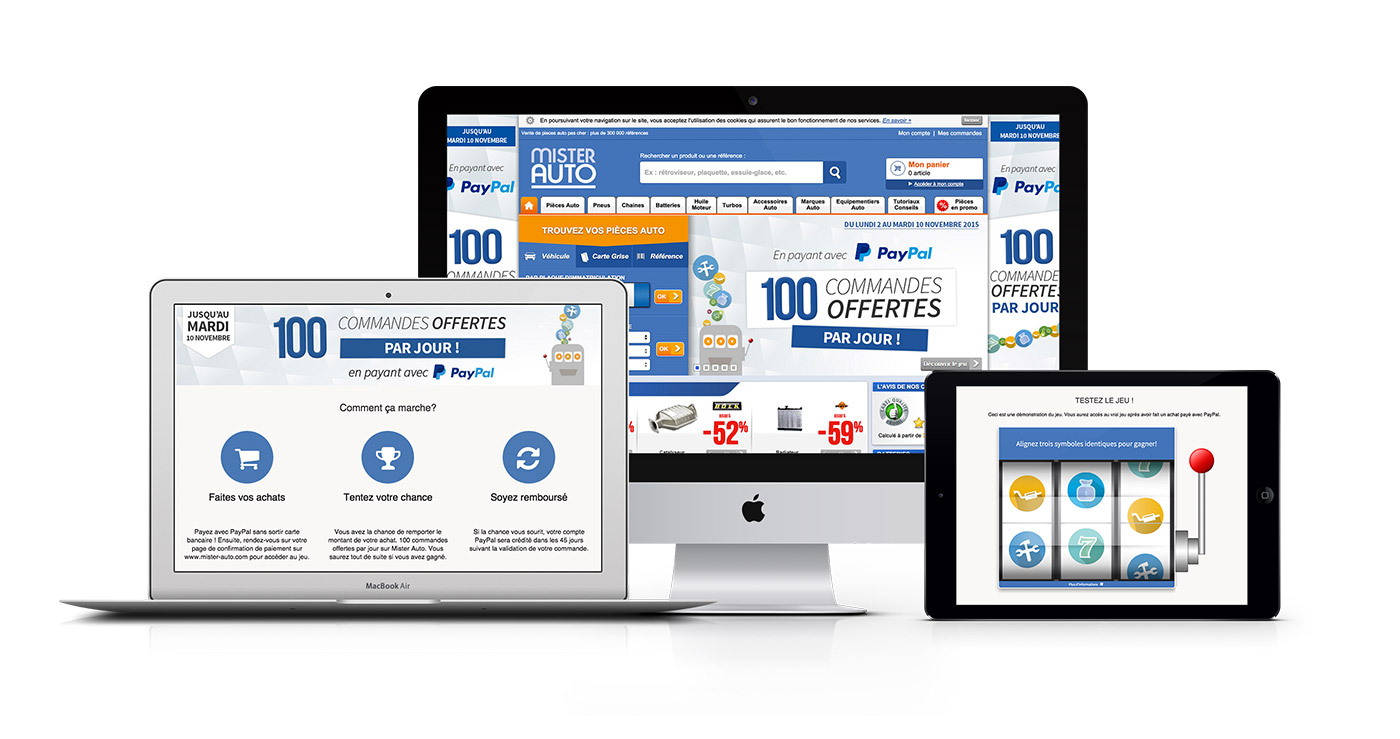
For years, gaming developers have used playable ads to stand out in a competitive market by letting people to “easily” demo a game before downloading it, with no conditions attached.
Non-gaming developers are also looking to use playable advertising to showcase their app capabilities and areas of focus and to interact in a gamified, unforgettable way with users.
According to a 2019 study conducted in eMarketer, playable ads are the most potent in-app ad format, with 28 percent of US agency practitioners giving top scores to playable ads.
Mobile advertisers more often use playable ads to push app downloads. The ads can also be for other purposes, such as driving sign-ups, page clicks, app re-engagement, and customer retention, as well as branding strategies.
For instance, Reese's generated brand awareness for Reese's Pieces with a playable ad in the Pac-Man style, in which players swallow Reese's Pieces instead of the usual pellets and ghosts. This brilliant marketing campaign has generated high interaction and repeats plays
Or you can look at PayPal for another example. In 2019, PayPal recently introduced a new feature for instant transfer. The company then built a playable experience to advertise the feature to current users and to attract potential users to try the service. Creating a playable experience helps PayPal attract new and keep existing customers in an innovative way.
8. Make your customers say “yes”
YES is a very powerful word. It's the green light at the door that lets you in. Having people say yes to little things before going for the win is an age-old sales strategy. This provides a feeling of connection and pleasantness. Many companies use social media to make customers say yes to their offers: pump up an audience with social marketing, get them to take a minor step (watch a video or sign up for an email list), gain trust, and convert. This entire process is a series of small agreements which gradually open the door to a sale.
结论
It is recommended that you start each marketing campaign by humanizing your end user. This is particularly important for any smart marketer. Marketing psychology on its own would not be enough to get the job done, though. There is no perfect general implementation. You need to incorporate marketing psychology with other marketing techniques that make sense of the product or service you offer to optimize success. In other words, approach from all directions.
Ongoing enhancement and refining help to optimize ad strategies, so you also should spend time on it. A blanket approach is rarely of use in any real-life situations. At the end of the day, discovering your own magic formula for success is up to you.
Remember, there is no “one-size fit-all” marketing strategy. What makes one business successful may turn another down. All in all, study your customers, figure out what they want and need, then work to find the finest way to close the deal.
Now, it's high time you put the theory to practice and apply psychology to your own marketing!
